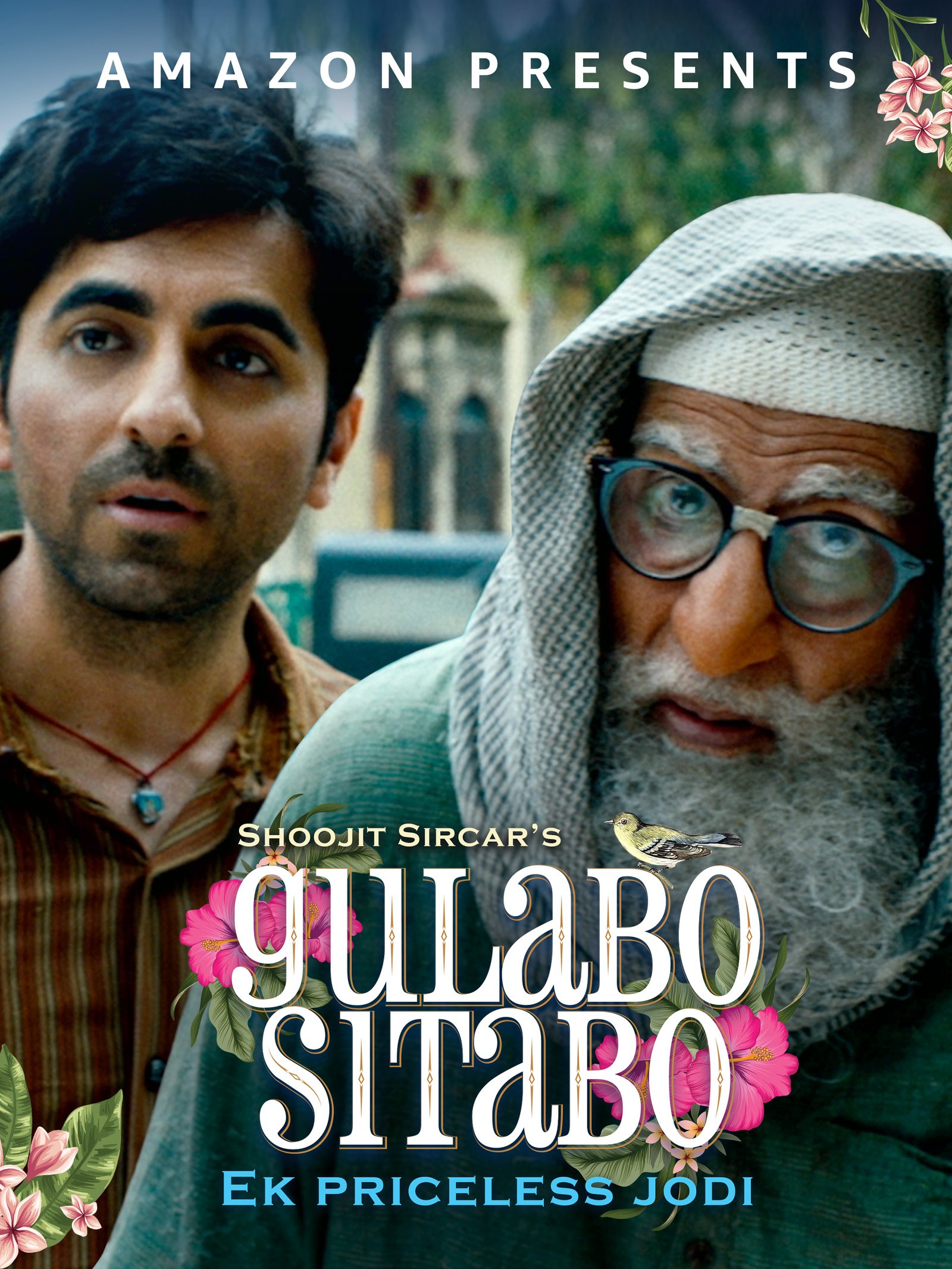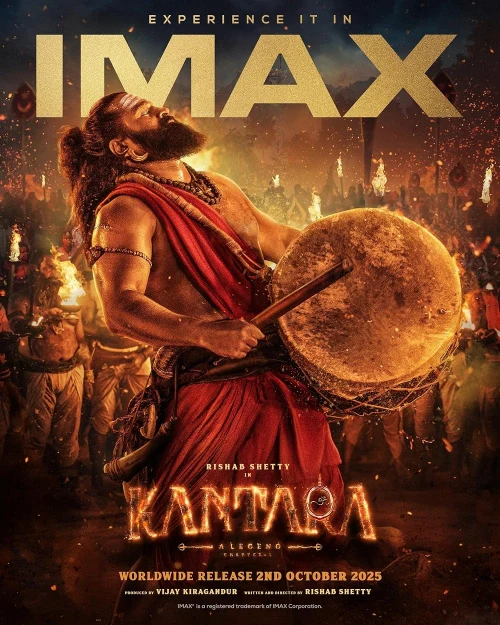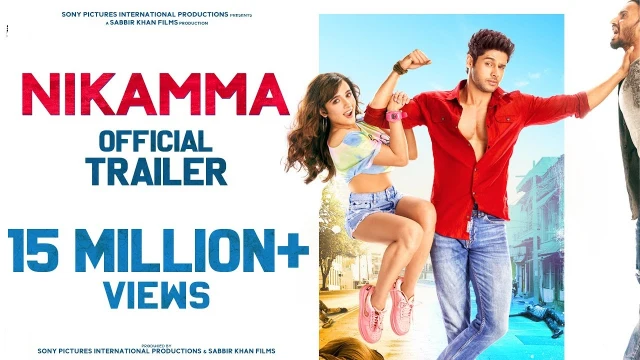Gulabo Sittabo Movie Review: Plot, Cast, Music, Streaming & Cultural Impact

🧵 Story and Plot Summary (Non-Spoiler + Spoiler)
📜 Non-Spoiler Summary
Set in the heart of old Lucknow, the film brings alive a quirky and slow-burning dramedy wrapped in heritage, greed, and generational conflict. The story revolves around an old, crumbling mansion known as Fatima Mahal and the constant tug-of-war between its 78-year-old self-proclaimed caretaker Mirza and his shrewd tenant Baankey Rastogi. This daily friction between the two is filled with hilarious insults, petty arguments, and power games that mirror the relationship dynamics of puppets in the traditional Gulabo-Sitabo puppet show — hence the metaphorical title.
Instead of focusing on high-stakes action or dramatic romance, the narrative moves at a deliberate pace, immersing the viewer into the dusty lanes, fading royalty, and socio-economic ironies of small-town India. The film thrives on subtle moments, observational humor, and strong character writing. At its core, it’s a reflection on human nature, greed, survival, and the absurdity of ownership.
The director offers a slice-of-life journey that mixes realism with satire, exposing how systems exploit both the rich and the poor — and how nobody comes out clean.
🪞Spoiler Summary
As the narrative progresses, Mirza’s obsession with the mansion becomes increasingly evident. Despite his frugality, he dreams of taking full ownership of Fatima Mahal, currently owned by his elderly wife Begum. He tries to evict Baankey, a flour mill worker, who refuses to pay increased rent. Their feud escalates until it draws the attention of an archaeology officer and a greedy property agent.
While Mirza plots behind everyone’s back to sell the property for a hefty price, Baankey too plays his own game. But just when it seems that Mirza may finally win, the tables turn. The Begum, who had appeared to be in the background all along, emerges as the master puppeteer. She sells the haveli without Mirza’s knowledge, marries a younger man, and escapes to live her life freely.
Mirza, heartbroken and penniless, is left with just an antique chair from the mansion. The story ends with him clutching it like treasure — a tragicomic image of a man whose dreams slipped away while he schemed for control.
This ending perfectly fits the theme of the film — no one wins in the battle of ego and greed. The mansion, much like a character itself, outlives them all.
🎭 Cast and Characters – A Tale of Quirks and Conflicts
The movie features a small yet power-packed cast. Leading the pack are Amitabh Bachchan and Ayushmann Khurrana, portraying characters that are far removed from their usual cinematic avatars.
- Amitabh Bachchan as Mirza Sheikh: He completely transforms into the 78-year-old caretaker of Fatima Mahal. With prosthetic makeup, a hunched posture, and a grumpy persona, Bachchan delivers a subdued yet detailed performance. Mirza is obsessed with the mansion and willing to go to any extent to claim it. His miserly nature and petty behavior bring humor but also provoke empathy.
- Ayushmann Khurrana as Baankey Rastogi: A struggling tenant who constantly argues with Mirza over rent. Baankey’s life is messy, from running a small wheat mill to handling his demanding family. Ayushmann skillfully portrays his frustration, street-smartness, and vulnerability.
- Farrukh Jaffar as Begum: The real owner of the mansion and Mirza’s wife. Her character seems silent and side-lined for most of the film, but she ends up being the most powerful. Farrukh Jaffar’s presence brings authenticity and surprises the audience by the end.
- Supporting Characters:
- Vijay Raaz as Gyanesh Shukla, an archaeology officer with his own agenda.
- Brijendra Kala as a lawyer with a satirical edge.
- Srishti Shrivastava, Ananya Dwivedi, and others as Baankey’s family.
The cast dynamics are carefully designed to reflect class divisions and hidden intentions. Every character plays a part in revealing the deeper themes of ownership, aging, and decay.
🎶 Music and Soundtrack of gulabo sittabo movie
Composed by the gifted Shantanu Moitra, the soundtrack of this film is as gentle and earthy as the narrative. The music is less about grandeur and more about mood — it subtly enhances the scenes with folk-inspired melodies and poetic lyrics.
🎵 Song List:
- “Jootam Phenk” – Sung by Piyush Mishra, this opening track sets a whimsical tone. The lyrics are satirical and the rhythm has a rustic charm.
- “Kanjoos” – A quirky number capturing Mirza’s miserly ways.
- “Do Din Ka Ye Mela” – A soulful track that underlines the film’s theme of impermanence.
- “Madari Ka Bandar” – A playful melody that highlights the puppet-like manipulation of the characters.
- “Budhau” – A light-hearted instrumental piece with Hindustani flavor.
🎤 Lyrics and Poetic Value
The lyrics by Dinesh Pant, Puneet Sharma, and Vinod Dubey blend humor, folk wisdom, and sharp observation. The songs don’t interrupt the story but melt into the background, creating a musical texture that’s emotional and traditional.
🎧 Reception
The album received appreciation from niche cinema lovers and critics. Though it wasn’t a commercial chartbuster, it resonated deeply with those who enjoyed the film’s slow rhythm and classical aesthetics.
🎭 Performances and Acting Reviews in gulabo sittabo movie
🎬 Amitabh Bachchan’s Transformation
Bachchan’s portrayal of Mirza is one of his most unconventional roles. He disappears behind heavy prosthetics, thick glasses, and a nasal voice. His mannerisms, sly glances, and petty schemes reveal the character’s eccentricity. Critics praised his commitment to the role, noting that he made an unsympathetic character strangely endearing.
🎬 Ayushmann Khurrana’s Grit
Ayushmann tones down his usual charm to play the irritated and sarcastic Baankey. His performance is grounded and relatable. He brings humor with realism, especially in his exchanges with Mirza. Audiences and critics lauded him for stepping out of his comfort zone.
🎬 Supporting Excellence
Farrukh Jaffar stole the show with minimal screen time. Her comic timing and final twist left a lasting impression. Vijay Raaz and Brijendra Kala, both experts in playing sly characters, added depth with their subtle performances.
The ensemble cast worked in harmony, each actor fitting perfectly into the dusty, lived-in world the film creates.
✍️ Dialogues and Writing Style
Penned by Juhi Chaturvedi, the writing style is observational, dry, and laced with understated humor. The dialogues reflect real-life banter, especially in the daily arguments between Mirza and Baankey.
🎯 Noteworthy Elements:
- Use of Local Dialect: The script makes beautiful use of Lucknowi Hindi and Awadhi expressions.
- Sarcasm as Strength: Many lines are humorous not because of punchlines but because of how naturally they arise in petty quarrels.
- Irony and Symbolism: Much of the screenplay relies on visual metaphors — the crumbling haveli, Mirza’s obsession, Baankey’s broken flour mill — all symbolic of India’s class conflict and fading legacy.
The narrative style is poetic but grounded, with a strong focus on environment and atmosphere. It’s slow-paced on purpose, demanding viewers to observe closely rather than expect traditional storytelling beats.

📣 Release and Promotion Strategy of gulabo sittabo movie
The film took an unconventional route in terms of release. Initially planned for a theatrical debut, the pandemic forced a change in strategy.
💻 Digital-First Release
- Platform: Released on Amazon Prime Video on June 12, 2020.
- Significance: One of India’s first mainstream films to skip cinemas entirely and go directly to OTT. This marked a major shift in Indian film distribution due to COVID-19.
📢 Promotions
- Teaser Campaigns: Quirky teaser posters and trailers highlighted the weird chemistry between Mirza and Baankey.
- Virtual Interviews: Due to lockdowns, promotions shifted to online interviews and talk shows with the cast and director.
- Music Launches: Songs were released digitally, with lyric videos and animated visuals to complement the mood.
The decision to premiere online drew both praise and criticism, but it successfully created buzz and discussion in the industry.
💰 Box Office and OTT Streaming Performance
While the gulabo sittabo movie missed out on traditional box office figures due to its digital release, it made a strong impression online.
📈 Streaming Stats
- Amazon Prime reported high viewership within the first week.
- It ranked among the top 10 most-watched Indian films on the platform in 2020.
- The film gained international attention as it was made available in over 200 countries.
🎥 Financial Success
- Estimated digital rights were sold for ₹60–65 crores, a profitable figure given the modest budget.
- Without theatrical overheads, the film achieved a net profit while pushing the envelope for direct-to-digital releases.
Though the usual box office numbers were absent, the film helped redefine what success looks like in the streaming age.
🎯 Critical and Public Reception
The film received mixed to positive reviews from critics, while the audience was split.
📝 Critical Reviews
- Praised For:
- Strong performances
- Writing and visual storytelling
- Realistic production design
- Criticisms:
- Slow pacing
- Niche appeal, not for everyone
Some critics called it a “visual treat and literary experience,” while others found the narrative meandering.
🙋♂️ Audience Response
- Cinephiles and lovers of character-driven cinema appreciated the subtle humor and social commentary.
- A section of the mainstream audience found it too slow or lacking in dramatic highs.
- Social media reactions celebrated the performances and shared memes around Mirza’s miserly ways.
🌍 Cultural Impact and Public Response of gulabo sittabo movie
🧩 Cultural Reflection
The film stands out as a cultural piece reflecting the slow decline of India’s historical wealth and the people clinging to its remnants. By setting the story in a decaying Lucknow mansion, the movie mirrors the fading charm of the old world — not just architecturally but emotionally and socially.
The characters symbolize different layers of post-colonial India:
- Mirza, the greedy, outdated caretaker, holding onto a structure that doesn’t belong to him.
- Baankey, the common man, caught in cycles of poverty and helpless ambition.
- Begum, the silent revolution, representing the forgotten but resilient women who ultimately hold power.
The use of the “Gulabo-Sitabo” puppet metaphor in the title adds depth. It subtly points to how people are played by systems — whether government, greed, or heritage. This blend of metaphor and realism gave the film an intellectual edge rarely explored in mainstream cinema.
🧠 Public Discussions
The release sparked conversations around:
- The future of theatrical vs OTT content distribution.
- The changing tastes of Indian audiences, as some embraced the slow, artistic narrative while others rejected it for being “too niche”.
- The importance of regional storytelling, which doesn’t depend on glamour but on characters, settings, and subtlety.
The film inspired academic essays, social media memes, and cultural commentary — especially highlighting the death of architectural heritage due to neglect and greed.
🎞️ Comparisons with Similar Movies
The tone, storytelling, and theme of this film align it with several Indian and international cinema pieces that focus on character-driven narratives and decaying settings.
🎥 Indian Films
- The Lunchbox (2013): Both films use a simple premise to explore deeper human emotions and social commentary. They rely on everyday realism instead of plot twists.
- Piku (2015): Also written by Juhi Chaturvedi, it shares the same humor-in-mundaneness style with a focus on elderly care and family friction.
- Khosla Ka Ghosla (2006): Focuses on middle-class property disputes and greed with a satirical tone, making it a natural cousin to this story.
🎬 International Films
- The Grand Budapest Hotel (2014): Visually different but similar in its theme of crumbling institutions and eccentric characters.
- Parasite (2019): Both films explore class conflict, hidden greed, and the façade of ownership — though Parasite is darker and more intense.
🧮 What Sets It Apart?
While other films deal with similar themes, this one stands out in:
- Its hyper-local Lucknow setting.
- Deep use of cultural metaphors (puppetry, decaying havelis).
- Understated, minimalist cinematic language.
🏆 Awards and Recognition for gulabo sittabo movie
Despite its unconventional approach, the film earned appreciation in award circuits and film festivals.
🥇 National Awards
- Farrukh Jaffar won the Best Supporting Actress at the 66th Filmfare Awards, one of the oldest winners in the history of the award.
- The film was nominated for Best Actor, Best Original Story, and Best Dialogue in various award shows.
🌍 International Recognition
- Screened at several global digital film forums for its OTT-first release strategy.
- Earned praise for pioneering digital premieres from industry publications like Variety and The Hollywood Reporter.
🏅 Technical Achievements
- Special recognition for production design, costume work, and makeup artistry.
- Commended by critics for Amitabh Bachchan’s transformation, which became a talking point during award season.
While it didn’t dominate popular awards due to its niche appeal, the movie carved out a legacy for itself in artistic and technical categories.
📝 Conclusion and Final Thoughts
Gulabo Sitabo is not just a film — it is a quiet protest against the loss of simplicity, heritage, and empathy. While many Bollywood films chase drama and spectacle, this story finds power in pauses, pettiness, and broken bricks.
The film works best for viewers who enjoy peeling the layers of human behavior, class conflict, and irony in mundane life. Its biggest strength lies in how real it feels — like a forgotten courtyard in a family mansion, holding stories nobody wants to tell but everyone needs to hear.
In a time when content is fast, flashy, and loud, this movie stands like the haveli it’s based on — crumbling, quiet, and stubbornly proud.

visit now our other review ⚠️🚨⚠️ Shakuntala Devi Movie: Review Story of a Genius, Mother



